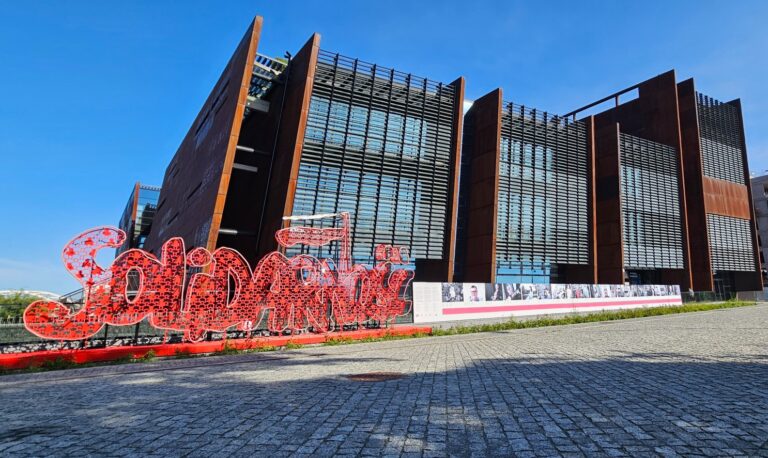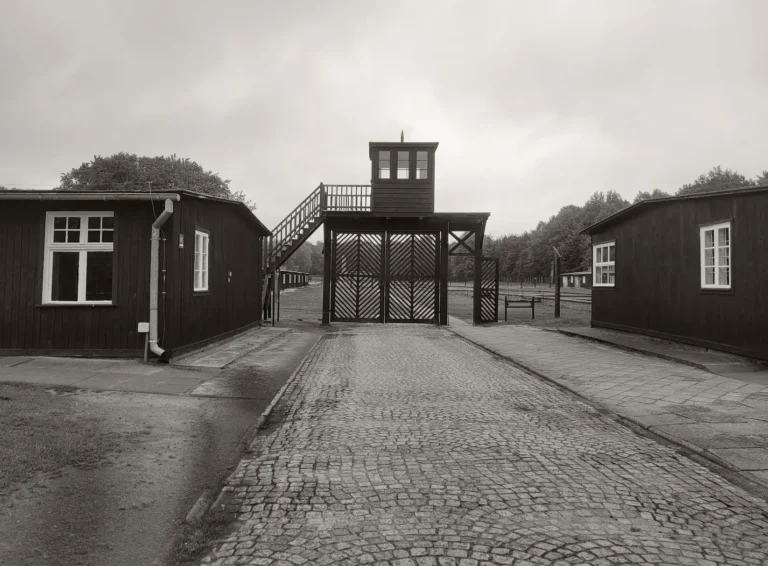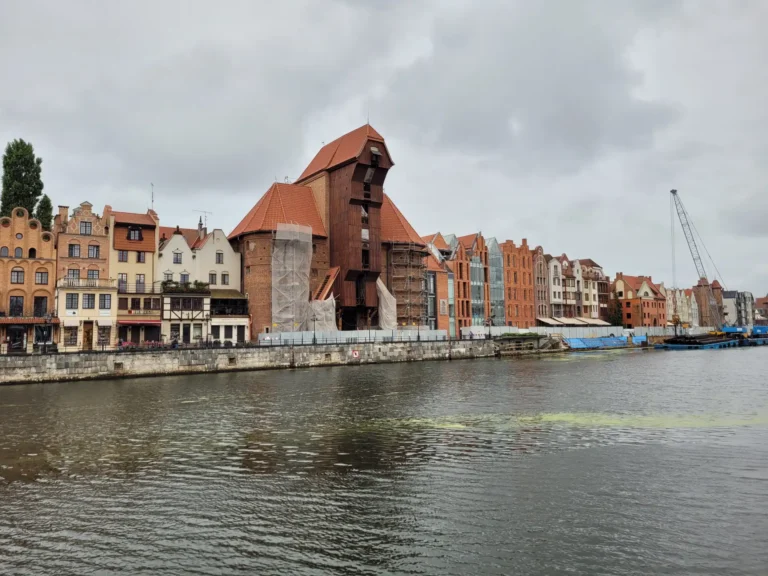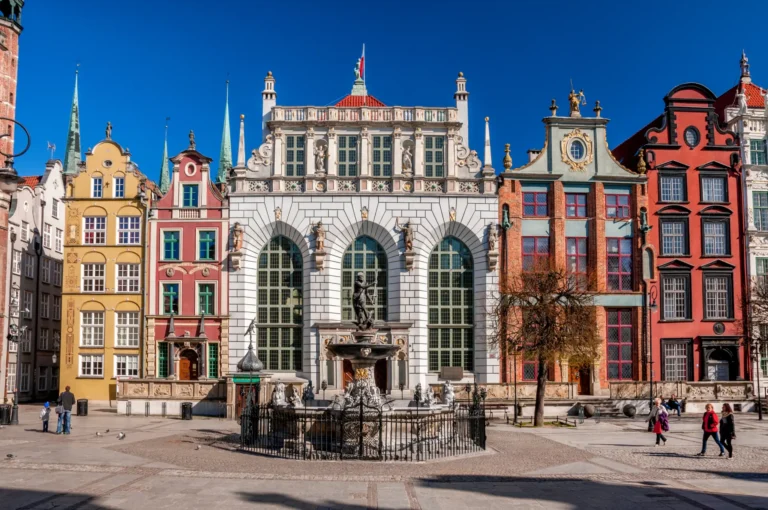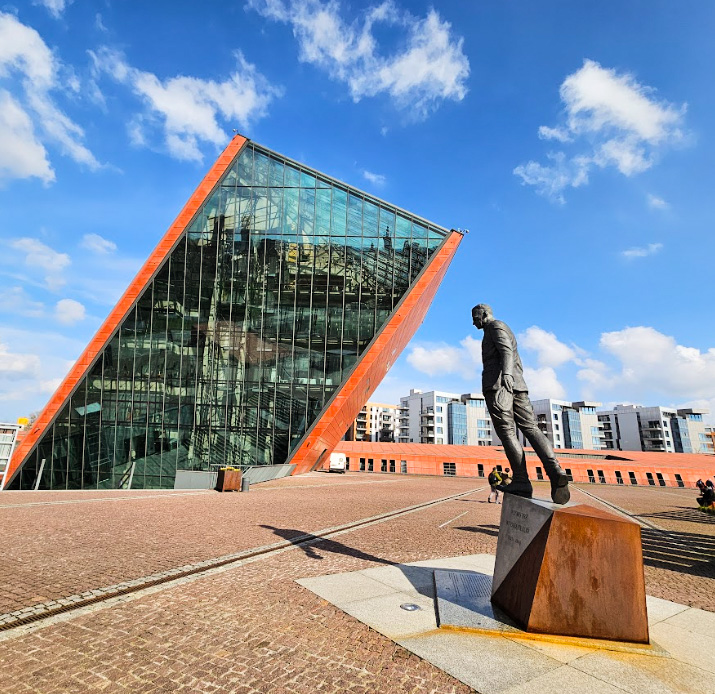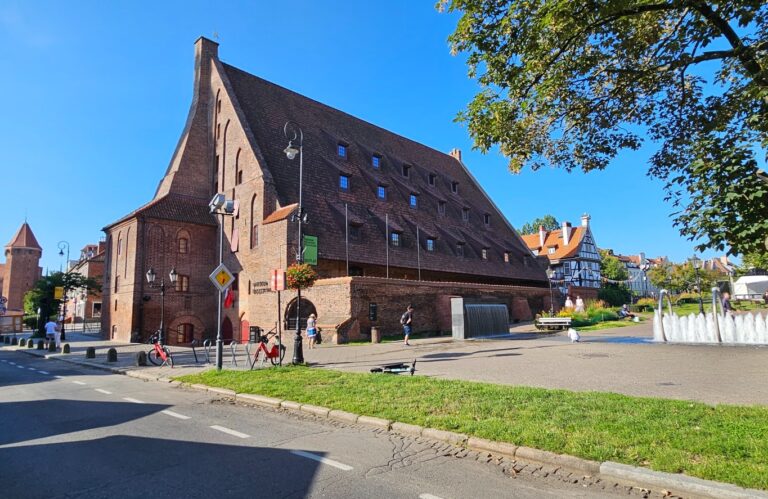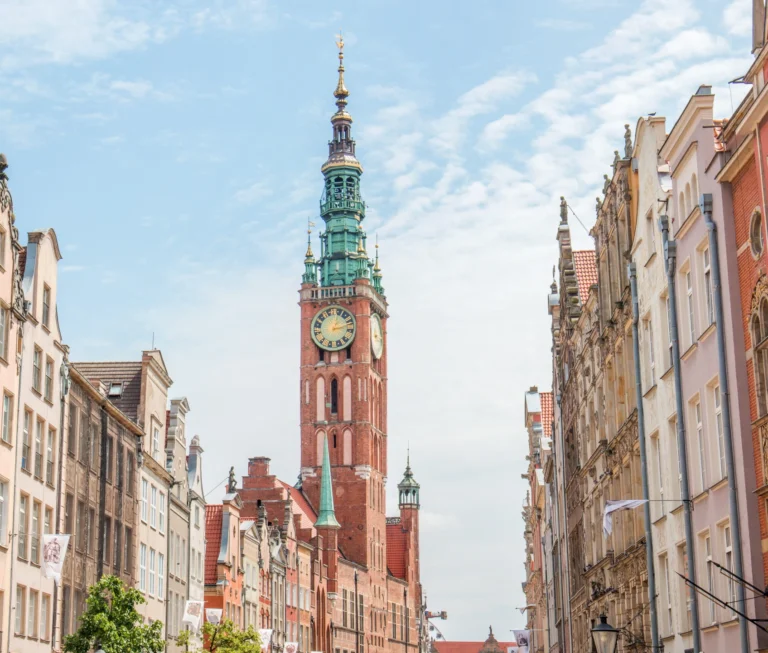Green Gate

More about Green Gate
The Green Gate, built between 1564 and 1568, is an excellent example of Dutch Mannerism in Gdańsk. It served a variety of functions, from a city scale to a royal residence. Today, after the reconstruction of the war damage, it is home to the exhibitions of the National Museum.
Touring Green Gate
The most important attractions of Gdańsk with a guide
- The Royal Road with the Main Town Hall, Neptune’s Fountain, Artus Court and beautiful tenement houses of wealthy townspeople
- The Golden Gate, Torture Gate, Green Gate and other water gates
- St. Mary’s Basilica
- Mariacka Street, known for its beautiful buildings and amber jewelry sellers
- Old Port with Crane, Ship “Sołdek”
- The Great Armory and the bustling Piwna Street
- Jan Hevelius Monument and the Great Mill
- The oldest parish church in Gdańsk – St. Catherine
- Church of St. Bridget, the symbol of Solidarity
Description:
We will start from the picturesque Długi Targ, where we will see the most important monuments, including: The court of Artus and Neptune, the guardian of the city. Then we will go to the monumental St. Mary’s Basilica, one of the largest brick churches in the world, to admire its magnificent interiors. Walking along the Motława River, we will stop at the Old Crane, which is the symbol of the Gdańsk port. We will end the tour at the Neptune Fountain and the City Hall, discovering the secrets of Gdańsk’s history.
- Sightseeing with a licensed guide
- Admission to St. Mary’s Basilica
- Admission to the church of St. Catherine
- Admission to the church of St. Bridget
- Headset (for groups of more than 10 people)
- The tour will run with a minimum of 5 registered adult participants. If the required number of people are not gathered, we will refund your money.
- Guided walking tour
- We recommend adapting your clothing to the prevailing weather conditions.
- Organizer: Etours sp. z o. o.
Old Town: The most important places in Gdańsk with a Private Guide
Prepare for a magical journey through the history and culture of Gdańsk’s Old Town on a unique tour with a private guide. From enchanted streets to monumental monuments, every step will be full of fascinating stories and unforgettable impressions.
- Guided tour by a licensed guide
- Cancellation possible 5 days in advance
- Admission to St. Mary’s Basilica
- Meeting at the Golden Gate,
- A walk along Długa Street – the most famous route in Gdańsk
- Neptune’s fountain
- Green Gate
- Green Bridge
- Old Harbor Crane
- St. Mary’s Basilica with admission
Organizer: Etours sp. z o. o.
The most interesting places
Green Gate
The Green Gate, built on the site of the older Kogi Gate, is one of the most characteristic places in Gdańsk. After reconstruction in the 17th century, the building hosted royal visits and city festivals. Destroyed during World War II, it was rebuilt in the 1950s. Currently, as part of the National Museum, it presents artistic and historical exhibitions, attracting tourists with its rich history and architectural beauty.
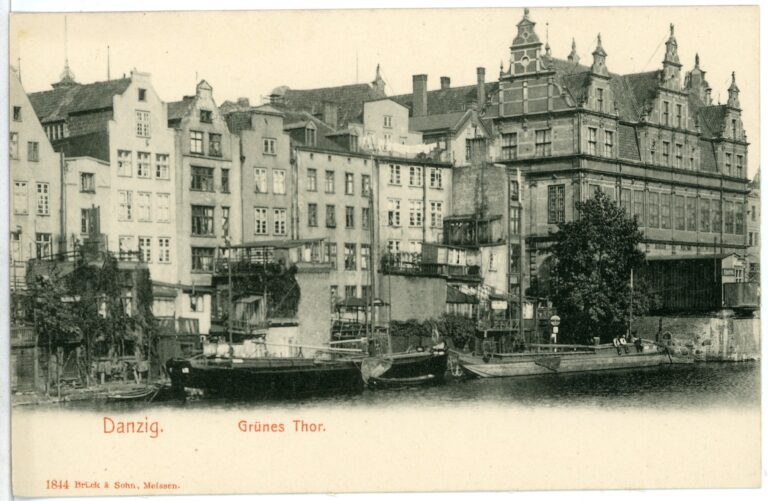
The most popular attractions
Green Gate reviews in Google:
Frequently Asked Questions
The Green Gate was built in 1564-1568
It represents the style of Dutch mannerism
Yes, the building was seriously damaged in the spring of 1945 during the war
Yes, it served many functions, including a city scale, a place for public ceremonies, and was planned as the seat of Polish kings.
The gate is characterized by four passages on the ground floor, rich sculptural decoration and is made of fine Dutch brick.
Yes, the gate houses the exhibition rooms of the National Museum in Gdańsk, which are available to visitors.
It was planned as the seat of Polish kings, but none of the monarchs ever lived there.
